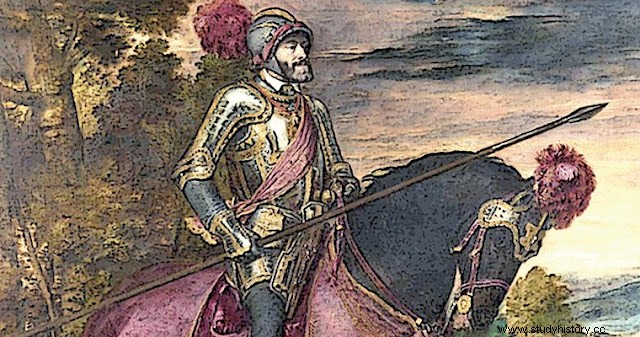
The first city founded by Francisco Pizarro was San Miguel de Tangarará, in a countryside planted with carob trees to the right of the Piura River, in what is now the district of Marcavelica, in the province of Sullana, on July 15, 1532, which fulfilled the desire of the conqueror to found a 'town of Christians' after leaving Poechos with destination to Cajamarca.
The place was governed by the cacique Tangar Arac ('pluvial swamp with fish', in Tallán) and the first Christian temple was erected there, where the priest Valverde officiated his first mass and began the process of evangelism. Blas de Atienza was appointed first mayor; accountant to Alberto Navarro, and treasurer to Alfonso Riquelme, and thus the first municipality of Peru was constituted. (San Miguel del Villar, today Piura, was founded a month later, on August 15, 1532).
This is how the historian Miguel Seminario Ojeda (History of Sullana) has established it; and the chroniclers Pedro Cieza de León (La Crónica del Perú) and Juan de Arce, a witness to the founding act, who pointed out that the place was “good land, with a lot of food.”
The version is supported by historians Reynaldo Moya Espinoza, Juan José Vega and Miguel Arturo Seminario Ojeda, although with an incorrect date due to the absence of a foundation act, which was not always drawn up when a city was established.
The act was confirmed by Emperor Carlos V by granting the coat of arms on December 7, 1537, distinguishing it as the first-born European city founded in South America.
The fact was corroborated by José Antonio del Busto in his General History of Peru and ratified by a Diploma to the Merit issued on July 15, 2005 by the Congress of the Republic.
That same year, the National Institute of Culture declared Tangarará Cultural Heritage of the Nation, and in April the regional government of Piura issued the Regional Executive Resolution No. 248-2005 that He declares it "first city founded by the Spanish in the South Pacific and National Capital of Transculturation".
The foundation of the town also appears in the Relation of the Discovery and Conquest of Peru, based on the manuscripts of Pedro Pizarro, nephew of the conqueror, active participant in the conquest and present at the act. Furthermore, it was declared a historical monument of Peru on June 3, 1982 by R. M. N ° 475-82-ED; and then the Historic District of the Piura region and one of the Eight Tourist Wonders of the Region.
Despite so many titles, documents and historical testimonies, Tangarará has seen its desire to become a district frustrated and remains stopped over time, with its huts with adobe walls and straw and mud roofs; with its modern court square called Encounter of Two Cultures, with an obelisk in its center inaugurated in 1932, to commemorate its 400 years of foundation, and a replica of the cross that Pizarro used for the founding act 486 years ago.
Dedicated to agriculture as its main activity –basically the production of rice and bananas–, Tangarará continues to suffer from a lack of infrastructure and basic services, which makes it difficult for tourists and visitors willing to appreciate and enjoy the indescribable beauty of its landscape and its thousand legendary stories.
This town full of history requires the attention of the authorities at all levels to continue growing with the important cultural and historical legacy that it represents and that currently identifies and makes each of its inhabitants proud. On Friday, August 24, in In the midst of a comprehensive expectation, a public hearing organized by the Education, Culture and Sports Commission of the Municipality of Sullana was held, with the aim of defending Tangarará as the first Spanish city established in the South Pacific by the Spanish conquerors.
The truth of it all is that Peru cannot continue to ignore its past, much less continue to allow a city like Tangarará, possessing enormous historical importance, as well as being very valuable, to continue in oblivion and abandonment.
>
Jose Vargas Sifuentes Journalist
